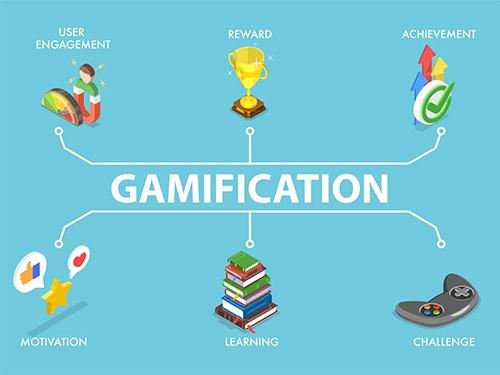
01 March 2021 – Osman Bedel –
Gamification in Education: Creating Engaging and Fun Learning Experiences
Imagine a classroom where learning is not just a task but an adventure, where students are motivated, engaged, and eager to explore new concepts. Gamification, the integration of game-like elements into non-game contexts, offers a transformative approach to education. By incorporating elements such as points, badges, leaderboards, and challenges, teachers can make learning more engaging, enjoyable, and interactive. In this blog post, we will explore the concept of gamification in education, its benefits, and how it can enhance the learning experience for students.
Understanding Gamification in Education
Gamification is the application of game design principles and mechanics to non-game environments, such as education. In the context of learning, it involves incorporating game-like elements to motivate and engage students in educational activities. These elements can include rewards, achievements, progress tracking, competition, and collaboration. The goal is to create an environment that fosters intrinsic motivation, active participation, and a sense of accomplishment.
Key Elements of Gamification in Education
-
Points and Rewards: Gamification introduces the concept of points and rewards to incentivize students’ progress and achievements. By earning points or virtual currency for completing tasks, students are motivated to actively participate and strive for excellence. Rewards can include digital badges, certificates, unlocking new levels, or gaining access to special privileges or resources.
-
Leaderboards and Competition: Gamification incorporates leaderboards to promote healthy competition among students. By displaying rankings based on performance or progress, students can see how they compare to their peers, encouraging them to work harder and strive for improvement. Competition can inspire students to push their boundaries, set goals, and celebrate their accomplishments.
-
Challenges and Quests: Gamification introduces challenges and quests that provide students with exciting and meaningful learning experiences. These can involve problem-solving activities, quests to unlock new content, or engaging in simulations and scenarios. Challenges create a sense of adventure and provide students with opportunities to apply their knowledge and skills in real-life contexts.
Benefits of Gamification in Education
-
Increased Engagement: Gamification enhances student engagement by transforming learning into an interactive and enjoyable experience. By incorporating game-like elements, such as rewards and challenges, students become active participants in their learning journey. The element of competition and the desire to earn rewards motivates students to invest more effort and time in their studies.
-
Personalized Learning: Gamification allows for personalized learning experiences. Students can progress at their own pace, tackle challenges that match their skill level, and receive immediate feedback on their performance. The flexibility of gamified platforms enables differentiated instruction, catering to individual learning styles and needs.
-
Improved Retention and Mastery: Game-based learning has been shown to improve retention and mastery of content. The interactive nature of gamification promotes active learning, critical thinking, and problem-solving skills. Students are more likely to remember and apply knowledge gained through hands-on experiences, quests, and challenges.
-
Collaboration and Social Learning: Gamification encourages collaboration and social learning. Students can work together, form teams, and engage in cooperative activities to achieve common goals. This promotes communication, teamwork, and the development of social skills, preparing students for future collaborative work environments.
-
Increased Motivation and Persistence: Gamification taps into students’ intrinsic motivation, making learning more enjoyable and meaningful. The use of rewards, badges, and progress tracking provides a sense of accomplishment, boosting self-esteem and encouraging students to persist in the face of challenges. Students become more self-directed, taking ownership of their learning journey.
Gamification has the power to transform the learning experience, making it more engaging, interactive, and enjoyable for students. By incorporating game-like elements, such as points, badges, leaderboards, and challenges, educators can tap into students’ intrinsic motivation and foster a love for learning. As we embrace the digital age and seek innovative ways to engage students, gamification in education offers a promising approach to create a dynamic and immersive learning environment where students thrive and reach their full potential.






